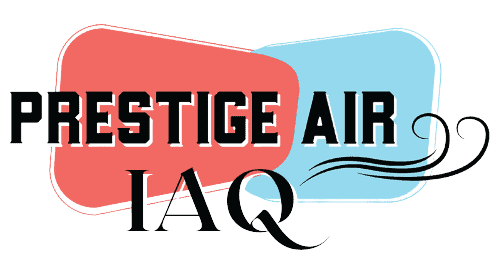Is Your Home Making You Sick? Which Factor Would Increase Poor Indoor Air Quality? What’s number 1?
Indoor air quality refers to the quality of air in and around buildings and structures, especially in enclosed spaces. Poor indoor air quality is a major health concern as it can lead to respiratory problems, allergies, and other health issues. Many factors can affect indoor air quality, and in this blog post, we will discuss the which factor would increase poor indoor air quality.
Number 1? Which factor would increase poor indoor air quality?
The most significant factor that can increase poor indoor air quality is the lack of proper ventilation.
Importance of ventilation in indoor air quality
Ventilation is the process of exchanging air between the inside and outside of a building. It plays a crucial role in maintaining good indoor air quality. Proper ventilation helps to remove pollutants and contaminants from the indoor air and replaces them with fresh outdoor air. This helps to maintain a healthy and comfortable indoor environment.
Without proper ventilation, the indoor air can become stagnant, which can lead to a buildup of pollutants and contaminants. This can cause poor indoor air quality, which can have a negative impact on the health and well-being of people who live or work in the building.
Effects of poor indoor air quality
Poor indoor air quality can have several negative effects on health. The following are some of the effects of poor indoor air quality:
Respiratory problems: Poor indoor air quality can lead to respiratory problems, such as asthma, allergies, and other respiratory illnesses. This is because pollutants and contaminants in the air can irritate the lungs and respiratory system, making it difficult to breathe.
Headaches and dizziness: Poor indoor air quality can also cause headaches and dizziness. This is because the pollutants and contaminants in the air can affect the central nervous system, causing these symptoms.
Fatigue and lack of concentration: Poor indoor air quality can cause fatigue and lack of concentration. This is because the pollutants and contaminants in the air can affect the brain, making it difficult to focus and concentrate.
Increased risk of infections: Poor indoor air quality can also increase the risk of infections. This is because pollutants and contaminants in the air can weaken the immune system, making it more susceptible to infections.
Which factor would increase poor indoor air quality? There are several to look at.
Factors that affect indoor air quality
Several factors can affect indoor air quality, including:
- Lack of ventilation: As discussed earlier, lack of ventilation is the answer to which factor would increase poor indoor air quality. Without proper ventilation, the indoor air can become stagnant, leading to a buildup of pollutants and contaminants.
- Chemical pollutants: Chemical pollutants, such as volatile organic compounds (VOCs) and formaldehyde, can also affect indoor air quality. These pollutants can come from paints, cleaning products, carpets, and furniture, among others.
- Biological pollutants: Biological pollutants, such as mold, bacteria, and viruses, can also affect indoor air quality. These pollutants can come from damp areas, such as bathrooms and basements, and can cause respiratory problems and other health issues.
- Outdoor pollutants: Outdoor pollutants, such as pollen, dust, and smoke, can also affect indoor air quality. These pollutants can enter the building through open windows and doors, and through cracks and gaps in the walls and roof.
How to improve indoor air quality
Improving indoor air quality requires identifying the source of the problem and taking appropriate measures to address it. The following are some measures that can help improve indoor air quality:
- Ventilation: As discussed earlier, proper ventilation is crucial for maintaining good indoor air quality. This can be achieved by opening windows and doors, using exhaust fans, and using a mechanical ventilation system.
- Eliminating sources of chemical pollutants: Chemical pollutants can be eliminated by using natural cleaning products, avoiding products that contain VOCs and formaldehyde, and using low-VOC paints and adhesives.
- Eliminating sources of biological pollutants: Biological pollutants can be eliminated by fixing leaks and reducing moisture levels in the building, fixing any mold problems, and ensuring proper ventilation in damp areas.
- Improving air filtration: Air filtration systems can help remove pollutants and contaminants from the indoor air. This can be achieved by using high-efficiency particulate air (HEPA) filters in air purifiers and HVAC systems.
- Regular maintenance: Regular maintenance of HVAC systems, air purifiers, and other appliances can help ensure that they are functioning properly and not contributing to poor indoor air quality.
Which factor would increase poor indoor air quality? Conclusion
In conclusion, poor indoor air quality is a significant health concern that can have several negative effects on people who live or work in the building. The answer to which factor would increase poor indoor air quality is the lack of proper ventilation. Other factors that can affect indoor air quality include chemical and biological pollutants and outdoor pollutants.
Improving indoor air quality requires identifying the source of the problem and taking appropriate measures to address it. This can include improving ventilation, eliminating sources of pollutants, improving air filtration, and regular maintenance. By taking these measures, we can maintain good indoor air quality and ensure a healthy and comfortable indoor environment.







